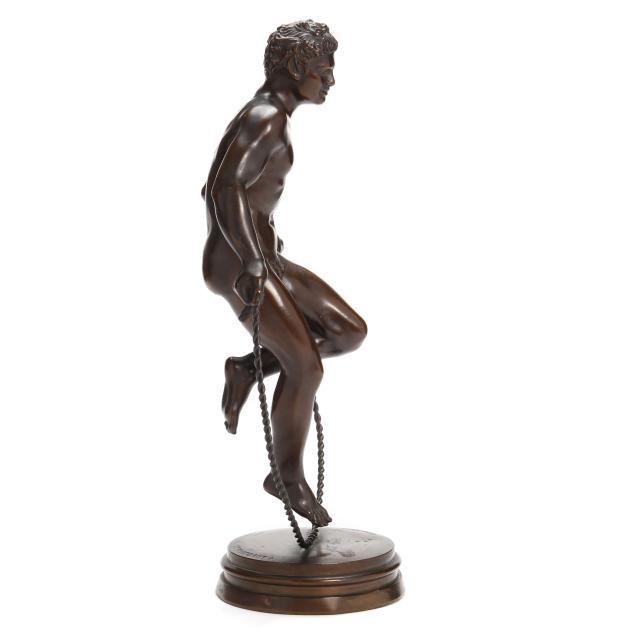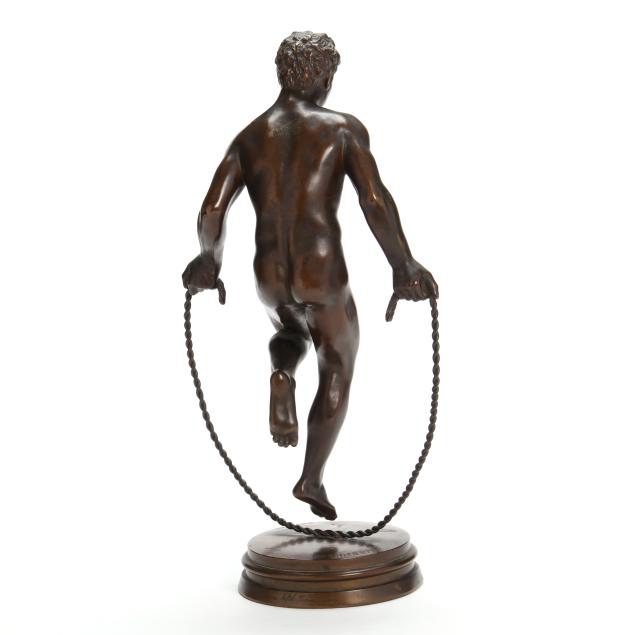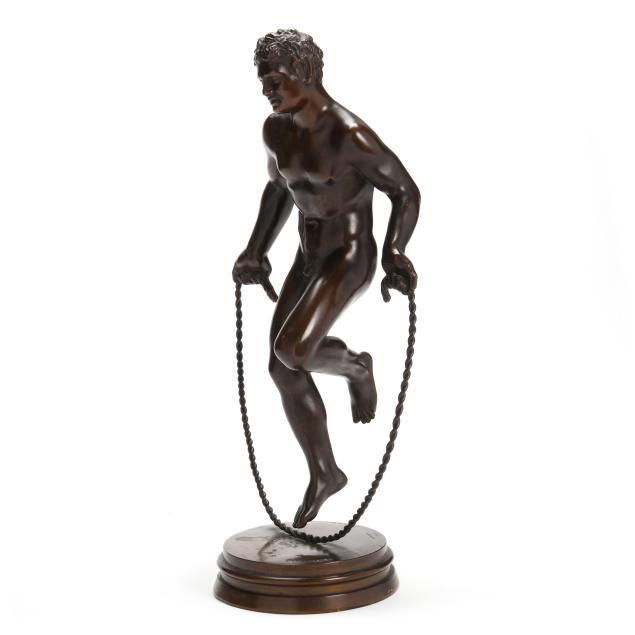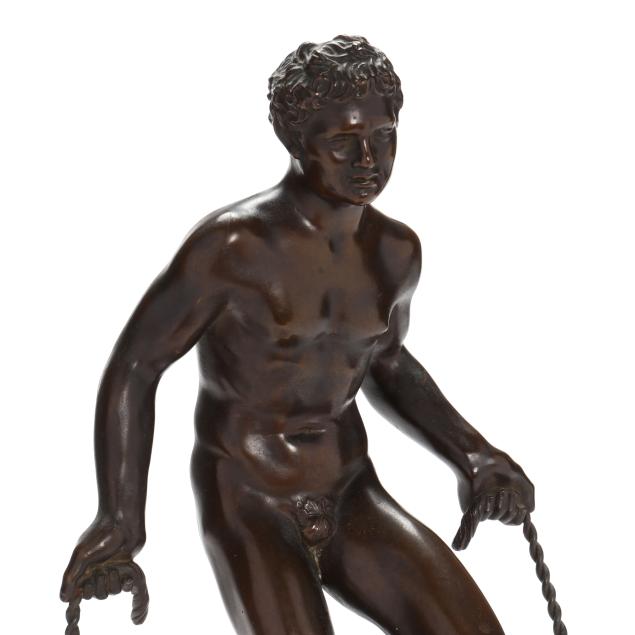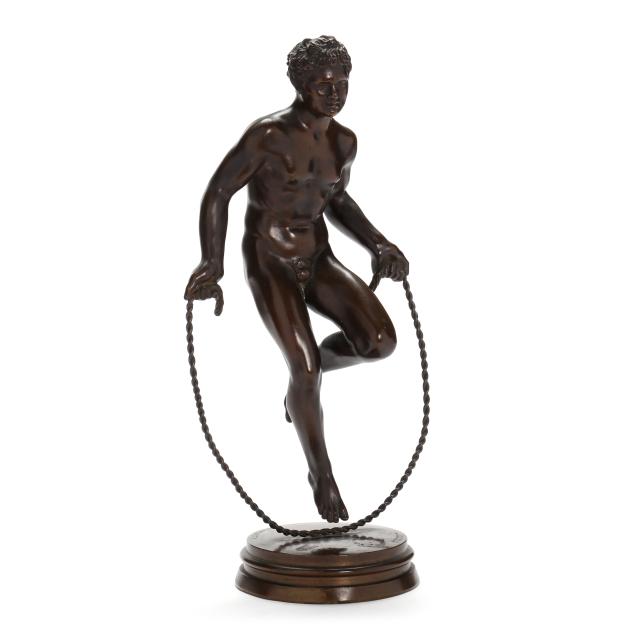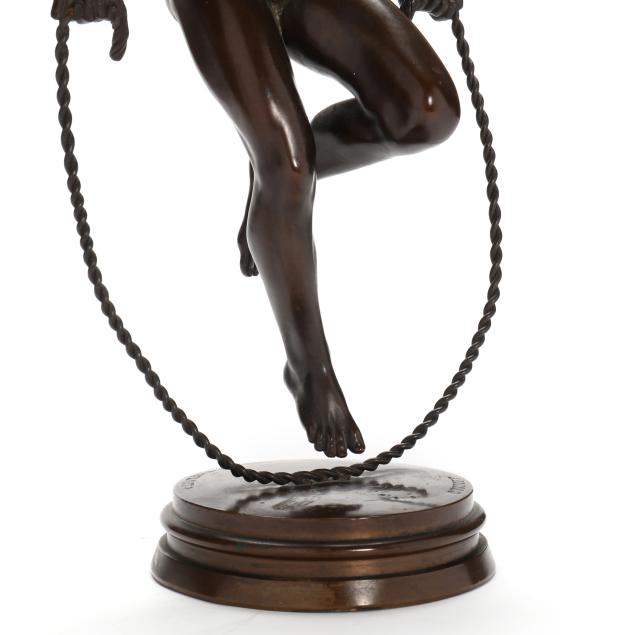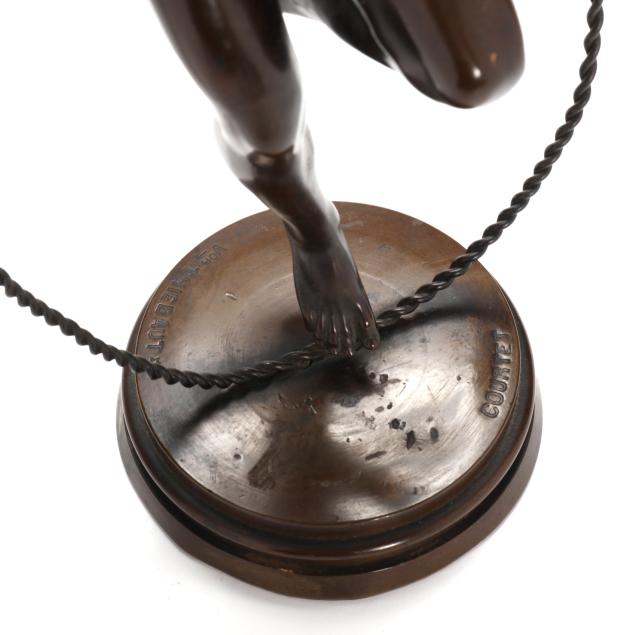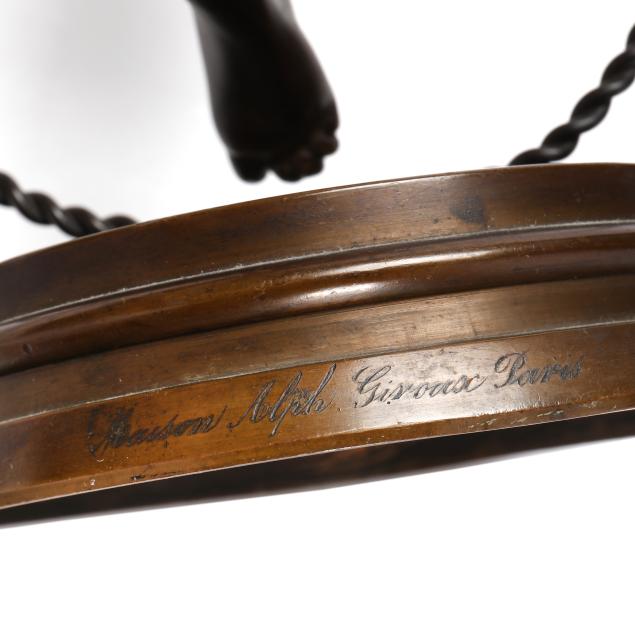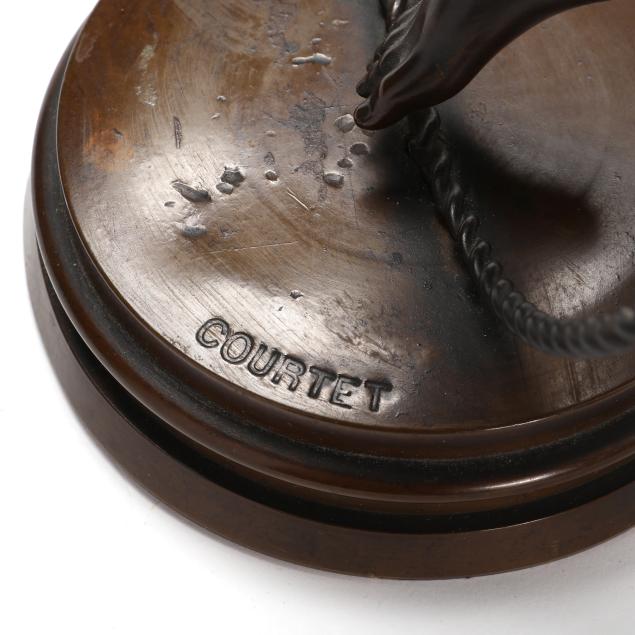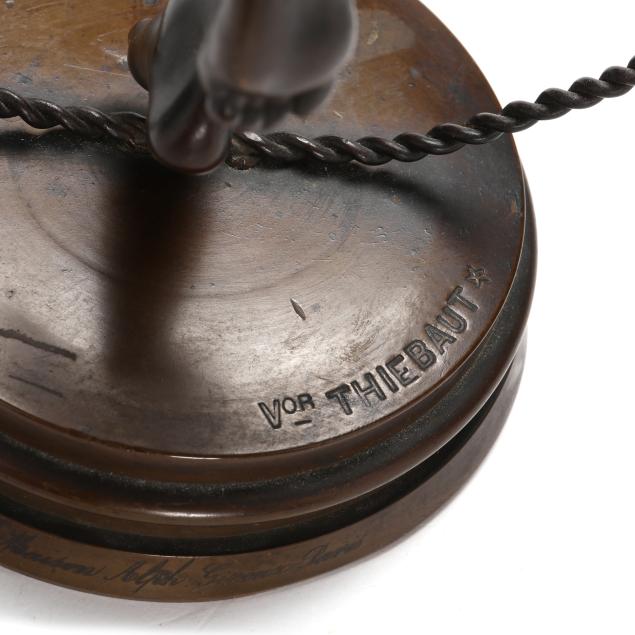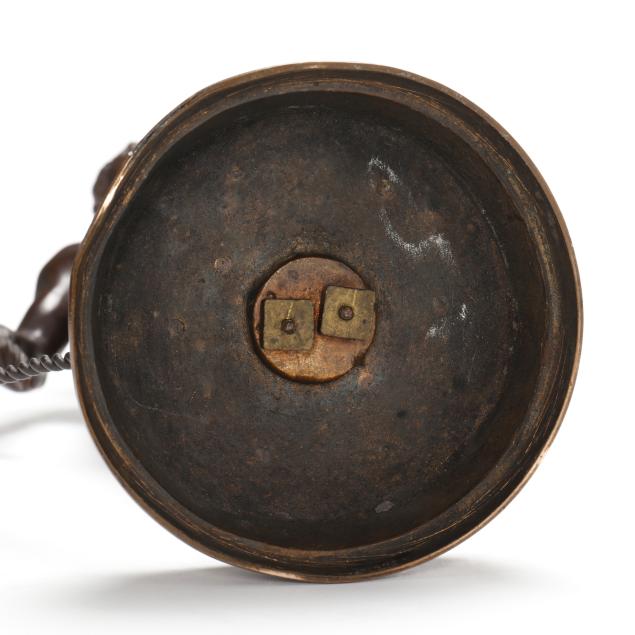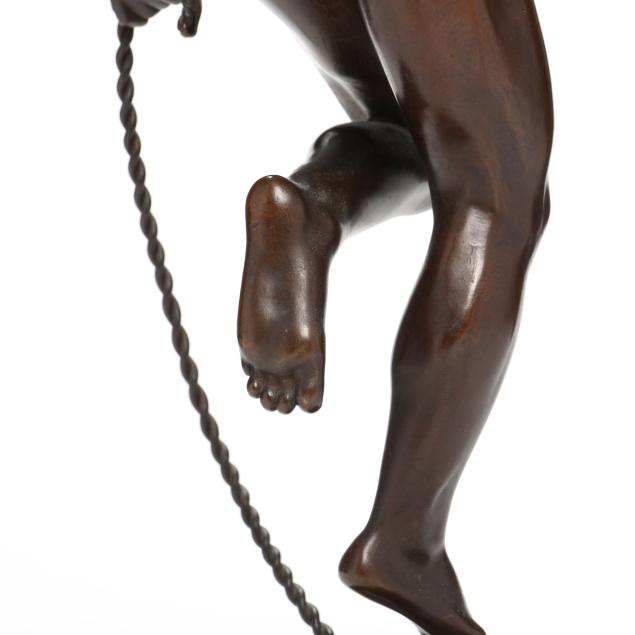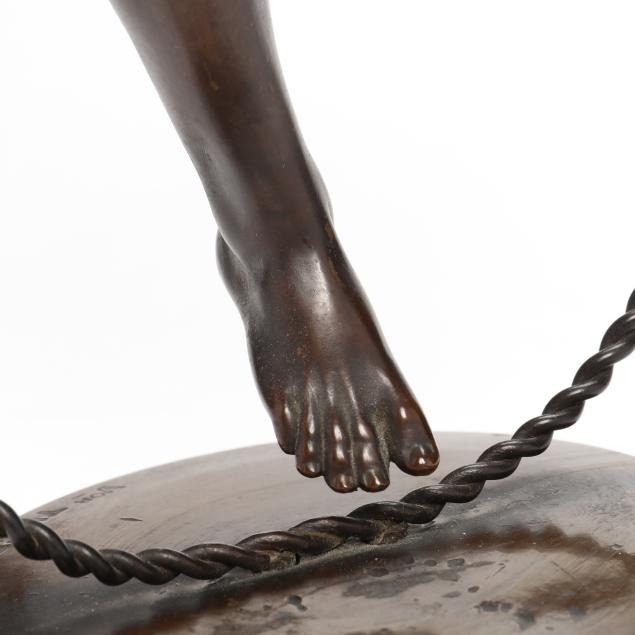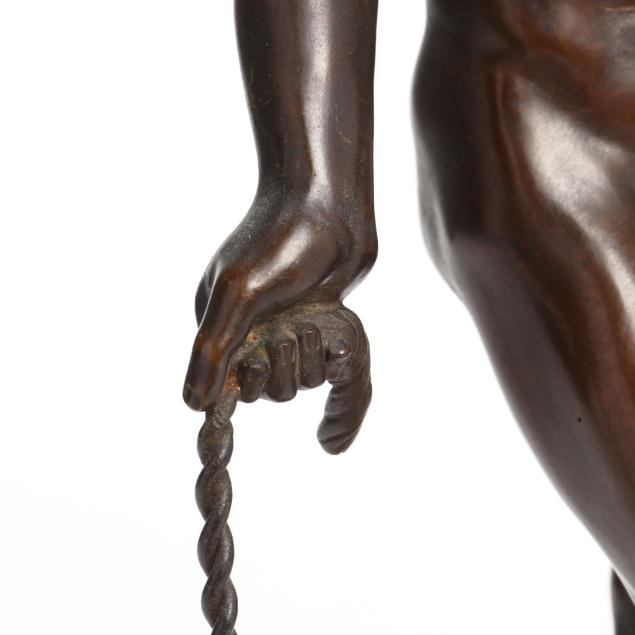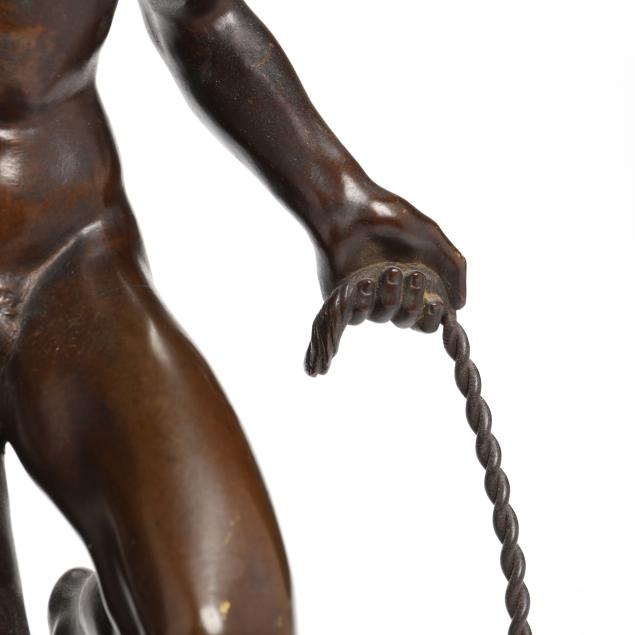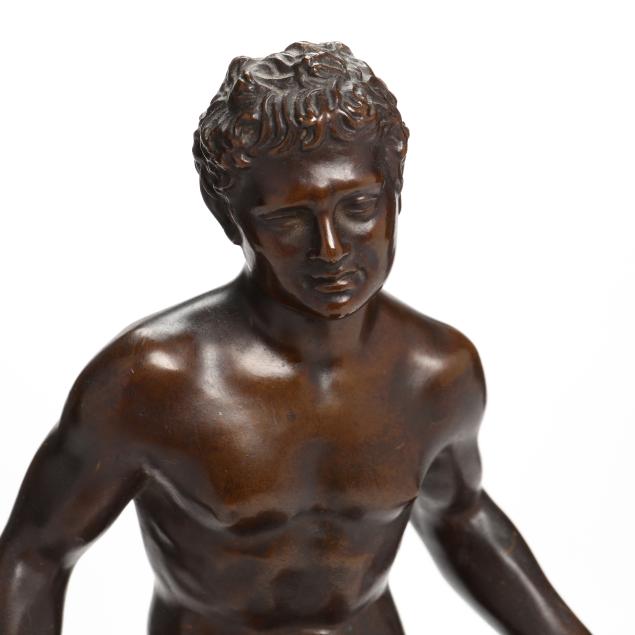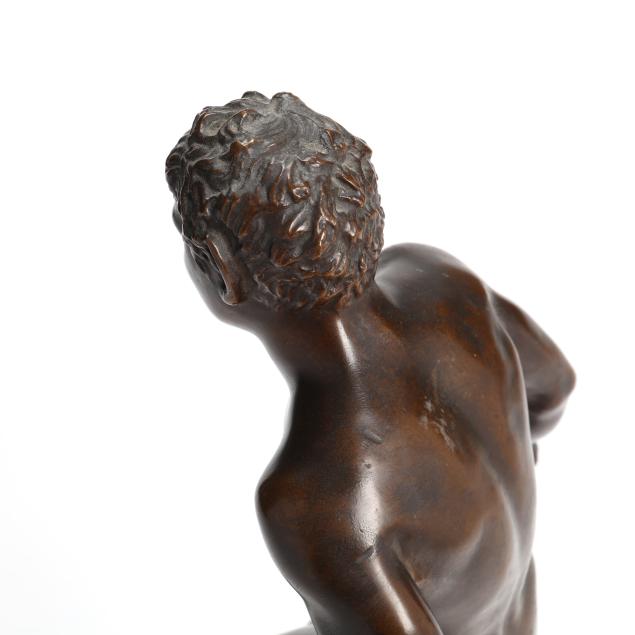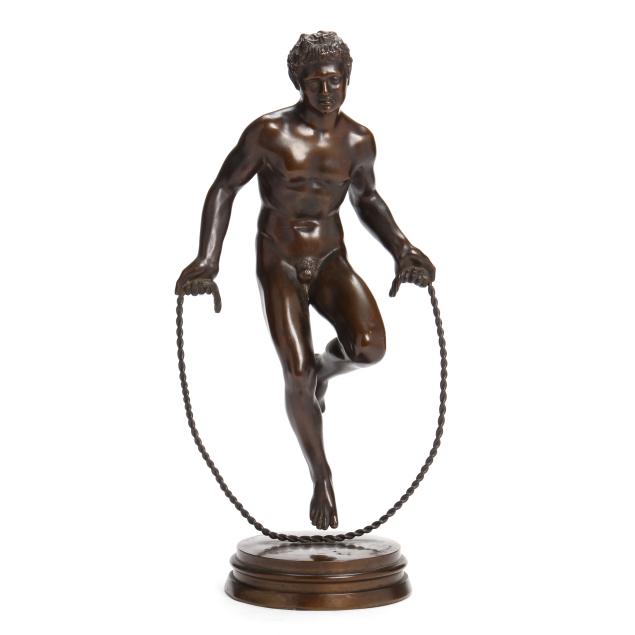
Lot 5079
Augustin Courtet (French 1821-1891), Bronze Model of a Faun Jumping Rope
Explore more items like this one.
Visit our Fine Art Department Fine Art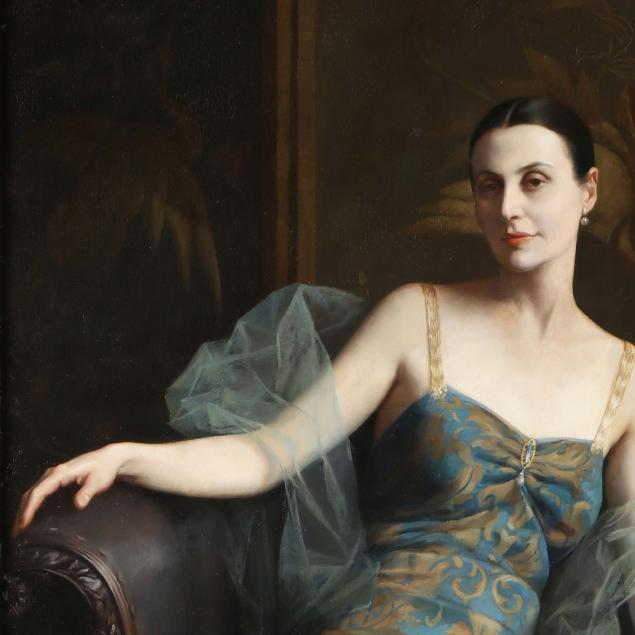
Lot Details & Additional Photographs
14 3/8 x 7 1/4 x 4 1/2 in.
From the Collection of the late Michael Joyce and Archie Carter III, Greensboro, North Carolina
The bronze was likely cast by Victor Thiebaut, "Vor Thiebaut" is the family foundry mark circa 1851-1870. Thiebault Freres started to work as founders from 1851, under Victor Thiébaut’s supervision. In addition to decorative works such as vases, cups and other accessories, Victor Thiebaut went into partnership with other various sculptors including David d’Angers, Carpeaux, Falguière, Carrier-Belleuse, Paul Dubois or Pradier. The firm cast monumental pieces, such as Saint Michel striking down the dragon designed by Duret for the Saint-Michel’s fountain in Paris. In 1870, his three sons, Victor (1849-1908), Jules (1854-1898) and Henri who was also sculptor (1855-1899) became the head of the firm.
The firm established by Alphonse Giroux (1775-1848) was a well-respected dealer in luxury goods, and known for its high-quality objects such as glove boxes, caskets for weddings and baptisms, and small pieces of furniture in a variety of styles. In the tradition of eighteenth-century marchands-merciers, Giroux and his sons often commissioned these objects from a variety of artists. Maison Giroux was founded by Francois-Simon-Alphonse Giroux in 1799 at 7 rue du Coq-Saint-Honoré, Paris, and expanded rapidly in the first half of the nineteenth century. Francois oversaw the manufacture and design of small items of furniture until his death in 1848. He won the 'Prix de Rome' in 1825, and a silver medal at the Paris Exhibition of 1834.
Under the direction of Giroux's sons, Alphonse-Gustave and André, the company flourished and became by the late 1860's one of the most pre-eminent Parisian Maison of luxury goods.
Refernce: P. Kjellberg, Les bronzes du XIXe siecle, Paris, 1989, p. 227.
Some rubbing to patina; plinth with some denting and nicks; otherwise good estate condition.
